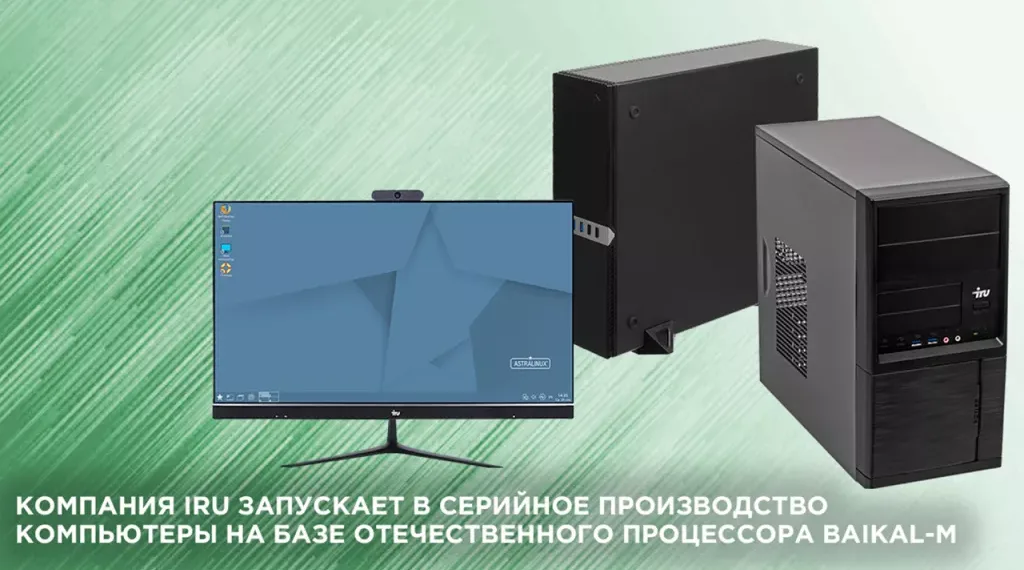According to the latest sources, a major PC maker from Russia named iRU has recently started the volume production of systems based on key domestic components. The components include the Baikal-M SoC, a motherboard, and an operating system based on Linux. The newly developed system doesn’t boast high performance; however, they are designed primarily for office workloads for various government institutions and government-controlled companies in Russia.
Coming to the specifications of the iRU’s Pcs, they are prominently based on the Baikal-M platform, which includes a 23.8-inch all-in-one desktop, regular desktops, as well as thin clients. All the PC’s being developed by iRU are powered by the Baikal-M SoC and will come equipped with up to 32GB of DDR4 memory. For storage, they will have up to 1TB SSD and up to a 3TB HDD. The operating systems powering them will be Astra Linux, Alt OS, Red OS, other operating systems, and software designed specifically in Russia.
The Baikal-M1 system-on-chip designed by Baikal Electronics has eight Arm Cortex-A57 cores that are rather outdated and operating at 1.50 GHz and are equipped with an 8MB of L3 cache. The SoC also carries with it, eight-cluster Arm Mali-T628 GPU.
The chip also comes with six USB 2.0/3.0 ports, out of which four are USB 2.0, two are USB 3.0, and 16 PCIe 3.0 lanes, two GbE ports, and two 10GbE ports. The SoC is also manufactured using TSMC’s 28nm fabrication process and has a 35W TDP.
It wasn’t a joke when we said earlier that the system isn’t targeted for heavy usage. The Arm’s Cortex-A57, used in Baikal-M SoC, is so outdated that it was first revealed in 2012 and was first used for commercial SoCs in 2015.
However, this step from the Russian PC makers is understandable. The Russian government is trying to make their PCs and servers used by government agencies and state-owned companies away from American tech. And this step is the first in many to come from making Russian offices free from processors and software developed in the U.S. and Europe.
However, this complete independence idea might be easy for small organizations that have already started domestic hardware and software. But for those who need high performance and compatibility with up-to-date programs still use Windows or Linux-based PCs powered by AMD or Intel processors.








